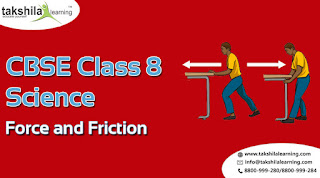CBSE Class 8 Science-Force and Friction
The 8 class student should have detected that kicking a soccer can modification its position. A push or pull functioning on associate degree object is named Force. The SI unit of force is that the Newton (N).
Force will create a stationary object move or create a moving object move quicker.
Force can slow down or completely stop a moving object– A moving toy automobile will be created to prevent by applying a force. so as to prevent or weigh down a moving body, we want to use force in a very direction opposite to the directions of motion of the moving body.
Force will modification the direction of a moving object– Force changes the direction of a moving object.
Force will modification the form or size of associate object– whereas creating Chapattis we alter the form of the dough by applying force with our hands. Materials that break simply once we apply a force square measure termed brittle.
Magnitude of Force
The magnitude of a force is the strength of the force acting on an object. It depends upon on the number of forces involved in a particular action.
- When two or more forces act in the same direction, then the magnitude of the force on the object is the sum of the forces.
- When two or more forces act in an opposite direction, then the magnitude of the force on the object is the difference between the forces.
- If the magnitude of the force on object changes, the effect of the force will also change.
Now we'll discuss category of forces as per Class 8 Science.

Comments
Post a Comment
Thank you we will contact ASAP.